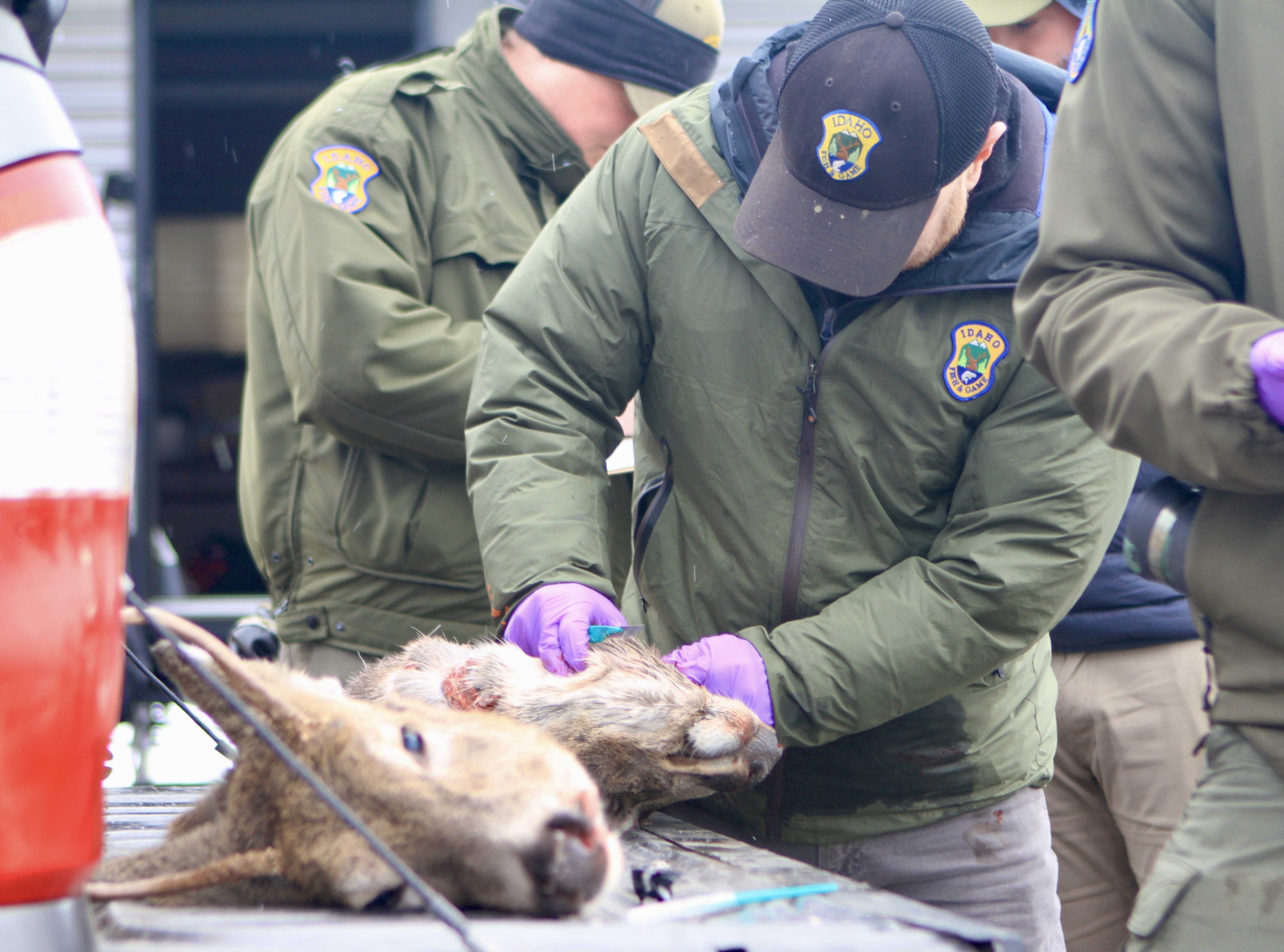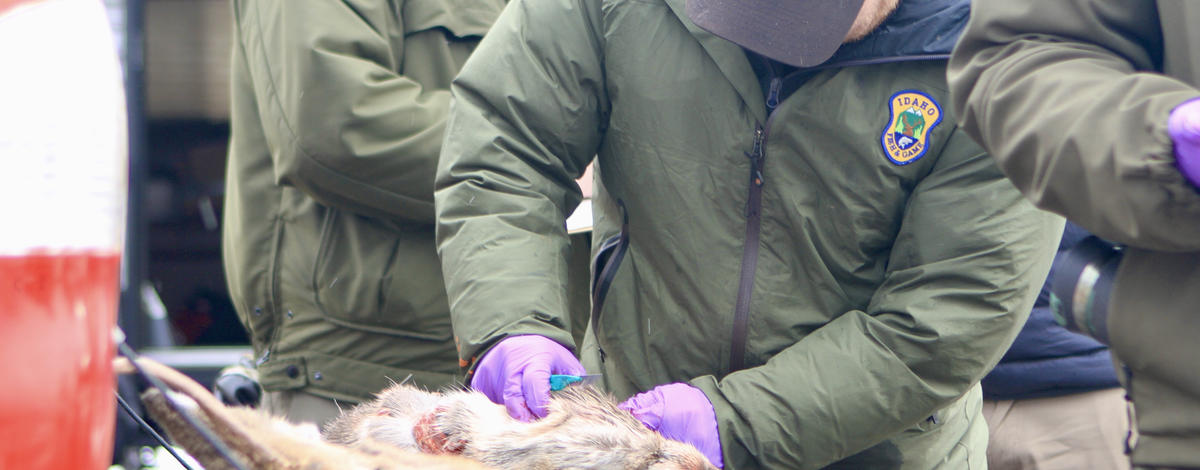Idaho Fish and Game Commission will consider proposed hunting season changes for Unit 14 in response to five deer and an elk testing positive for Chronic Wasting Disease. Hunters and other interested parties can comment on the proposals starting Feb. 22, and the deadline to comment is March 13. The commission is scheduled to decide on changes at its March 23-24 meeting at 600 S. Walnut St. in Boise.
The comment period will include a virtual public meeting in early March where Fish and Game staff will share information about CWD and the department’s plans for CWD management. The intent of proposed hunting season changes is to stop or slow the spread of CWD and keep the prevalence low, which is the number of animals within herds that have the disease.

Fish and Game’s 2021 CWD testing showed the amount of disease – or prevalence – is estimated to be less than 2 percent for deer and likely less in elk. Research from others states has shown that keeping the prevalence rate less than 5 percent can stop, or slow, the spread of the disease. When CWD prevalence rates increase above 5 percent, the disease is more likely to rapidly increase within the herd and spread geographically.
Also, structuring hunts to achieve lower densities of deer and younger age classes within herds has shown in other states to slow the geographic spread of CWD and hold prevalence at current levels or lower.
Fish and Game officials intend to increase the number of animals tested during regularly scheduled hunts during traditional hunting seasons. The proposed season changes are consistent with Fish and Game’s CWD management plan.
Proposed change options for public comment February 22 through March 13
Increase mule deer harvest
Option 1: Increase antlered mule deer controlled hunt tags from 180 to 400 tags with the hunting season running from Oct. 10 – Nov. 20.
Option 2: Replace existing antlered controlled hunt (180 tags) with a general-season, antlered-only hunt from Oct. 10 – Nov. 20.
Add antlerless mule deer hunt
Add new mule deer extra antlerless hunt with 200 tags from Oct. 10 – Nov. 20. “Extra tags” allow hunters to harvest an additional animal in addition to a regular or controlled hunt tag.
White-tailed deer extra tags
Option 1: In addition to the existing general season, either-sex whitetail hunt, add a new extra antlerless whitetail hunt with 250 tags, and a new whitetail, extra antlered tag with 250 tags. Each hunt would run Oct. 10 – Nov. 20.
Option 2: Extend the existing general, either-sex hunt from Oct. 10 – Dec. 31.
Increase elk tags
Increase elk tags in one land owner permission hunt in Controlled Hunt Unit 14-1 from 50 tags to 80 tags and extend the southern boundary of the hunt unit about 3 miles.
CWD is new in Idaho
Fish and Game received notification in November that two mule deer bucks taken in Unit 14 tested positive for CWD, which were the first-ever known cases in the state. Subsequent testing showed four more positive cases, including three in white-tailed deer and one elk, all in Unit 14, which is in Idaho County roughly east of U.S. 95 between Riggins to the south and Cottonwood to the north.
Statewide, Fish and Game tested more than 2,500 animals for CWD in 2021. Fish and Game has been testing for the disease since 1997 and sampled more than 20,000 animals during that time.
CWD is a neurological disease that affects deer, elk, moose and caribou. There is no practical live test for the disease, so only samples taken from dead animals can be used. Although new to Idaho, CWD is found in 29 U.S. states and four Canadian provinces, including neighboring states Montana, Wyoming and Utah. Learn more about CWD in Idaho at idfg.idaho.gov/cwd.
CWD affects the nervous system in deer, elk, moose and caribou and is caused by abnormal, misfolded proteins called prions that accumulate within the spinal column and brain, causing progressive damage to those cells and brain damage. CWD has a very long incubation period (time between infection and observable disease) that typically takes at least 10 months for a deer or elk to show signs of illness.

